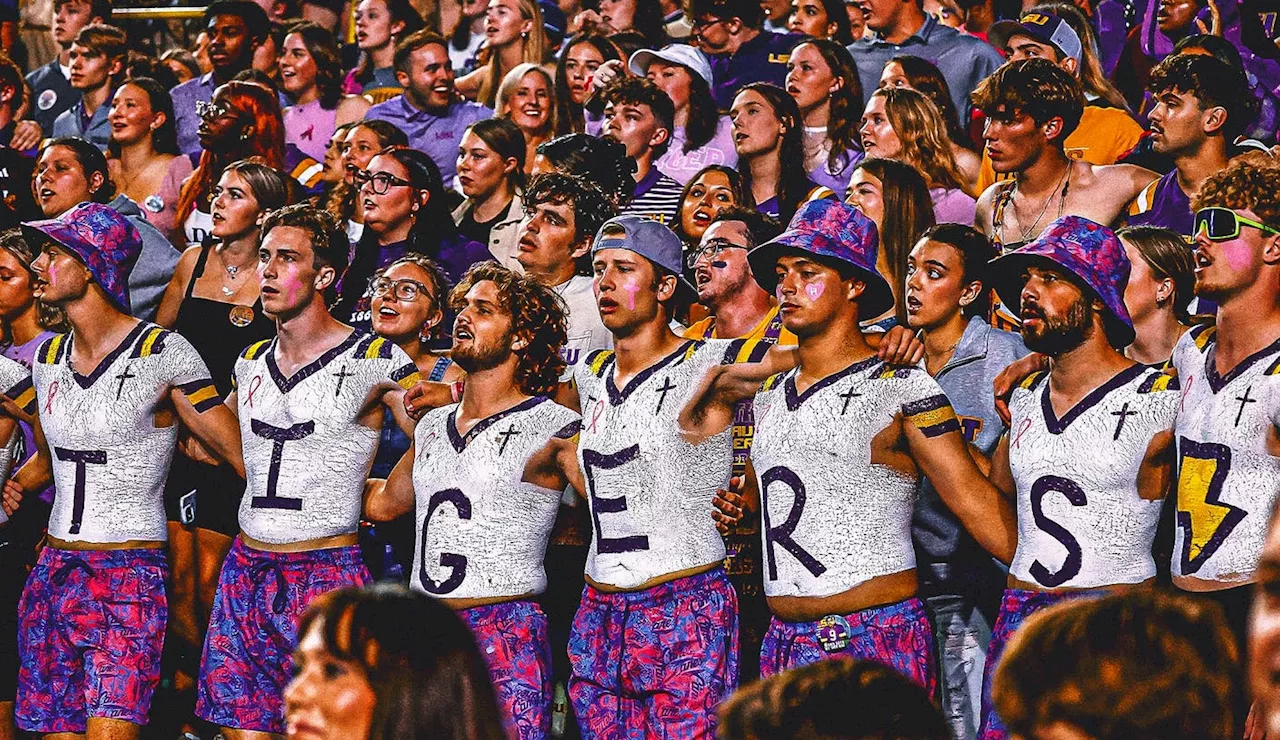The landscape of college football has evolved significantly as stadium anthems become essential to game day experiences. Universities across the United States have traded traditional pep bands and fight songs for contemporary hits, creating a vibrant atmosphere that energizes fans. Notable among these anthems are Garth Brooks’ rendition of “Callin’ Baton Rouge,” The Killers’ “Mr. Brightside,” and Tom Petty’s “I Won’t Back Down,” each resonating deeply with their respective audiences.
At Louisiana State University (LSU), Brooks’ “Callin’ Baton Rouge” has emerged as a powerful anthem, inspiring passionate responses from fans. Brooks shared in an email to the Associated Press, “We recorded the song to be played in stadiums and arenas, with one lone purpose… Get people fired up!” This vision is brought to life in Tiger Stadium, where fans vocally participate, shouting “LOUISIANA!” at the song’s mention. Brooks noted that the experience feels more like “a war cry than a tradition,” expressing his emotional connection to the LSU crowd.
The trend of integrating popular music into sports is not limited to LSU. Various colleges have adopted their unique stadium songs, creating a rich tapestry of modern traditions. At the University of Wisconsin, “Jump Around” by House of Pain has been energizing Badgers fans since its introduction in 1998. Tight end Ryan Sondrup spearheaded the idea while brainstorming in a sports bar, where he and friends identified the song as a perfect fit for game day. “It’s all-encompassing of all people in Wisconsin,” said defensive tackle Erik Waisanen, highlighting the song’s universal appeal among fans.
Michigan has found its own identity with “Mr. Brightside,” a song that has become an integral part of the game-day atmosphere. Columbia University lecturer Joe Favorito emphasized the unexpected nature of such an anthem gaining popularity, stating, “I don’t think The Killers ever had that in mind.” This underscores how music can transcend its original context, becoming a vital aspect of a university’s culture.
Florida’s connection to Tom Petty is particularly poignant, as the singer hailed from Gainesville. His song “I Won’t Back Down” has become a staple during games, resonating with fans who feel a personal connection to the artist. Similarly, Virginia Tech’s “Enter Sandman” and West Virginia’s “Country Roads” serve as rousing pregame rituals that unite fans in shared enthusiasm.
Timing is crucial for these anthems, especially during games. Michigan’s Jake Stocker explained that strategically placing songs like “Mr. Brightside” during key moments, such as the break before the fourth quarter, keeps fans engaged. “If you do ‘Brightside’ that first break in the third quarter, it’s done and people are leaving,” he cautioned. By reserving these songs for significant moments, schools can maintain energy and excitement throughout the match.
The evolution of stadium music reflects broader trends in sports and entertainment. Institutions must adapt to the changing landscape, understanding what motivates their fans. As Favorito noted, “You have to ride that to the full extent you possibly can.” This adaptability can extend to universities looking to engage diverse audiences, integrating varying genres to complement traditional fight songs.
Brooks, who attended Oklahoma State University, is also part of this musical shift. He expressed a desire to contribute a new song to his alma mater, currently working on a piece titled “COWBOY BLOOD.” He hopes it will capture the spirit of Oklahoma State and provide a fresh anthem for fans. “I have so wanted to sing a song that would represent my alma mater,” Brooks stated, emphasizing his commitment to connecting with the college football community.
As college football continues to embrace these modern anthems, the emotional and social connections they foster will likely shape the future of game-day experiences. Through the blending of music and sports, universities are not only enhancing the excitement of their programs but also creating lasting memories for fans across generations.
